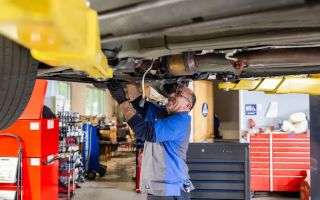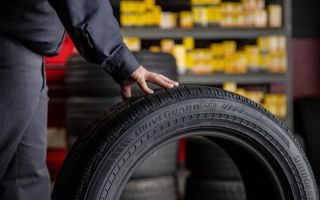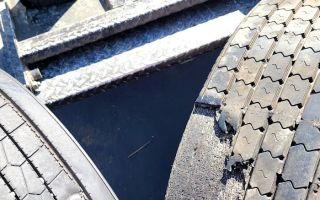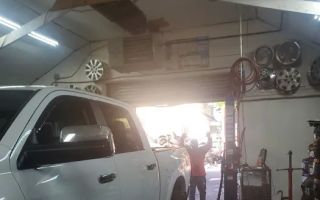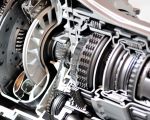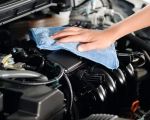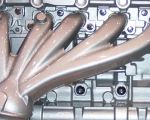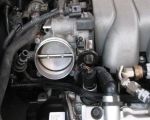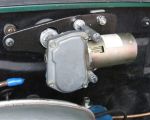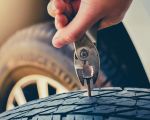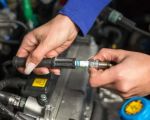How to Check for Vacuum Leaks in Your Car Engine: A Personal Guide to Solving Common Issues
1. Understanding Vacuum Leaks and Their Impact on Your Car Engine
As a car enthusiast and DIY mechanic, I can tell you that vacuum leaks are one of the most frustrating and elusive problems that can affect your car engine. These leaks occur when there is a break in the vacuum hoses, valves, or intake manifold, allowing air to enter where it shouldn’t. The vacuum system plays an essential role in your car, controlling various engine components, including fuel injection and emissions systems.
When there’s a vacuum leak, it throws off the delicate air-to-fuel ratio that your engine needs to run smoothly. This imbalance can lead to poor performance, rough idling, stalling, increased fuel consumption, and a check engine light illuminating on the dashboard. Knowing how to spot and fix these leaks can save you time, money, and a headache at the mechanic's shop.
2. Recognizing the Symptoms of a Vacuum Leak
Before diving into how to check for a vacuum leak, it’s important to recognize the symptoms. In my experience, the signs are pretty distinct once you know what to look for.

Pick Your Part - Help Yourself
1232 Blinn Ave, Wilmington, CA 90744, USA
2.1 Rough Idling and Stalling
One of the first signs of a vacuum leak is rough idling. If your car is idling unevenly or stalling frequently, it’s a good indication that air is entering the engine unexpectedly. This disrupts the idle speed, causing the engine to sputter or even stall when idling at a stoplight.

Pick Your Part - Greer
13054 E Wade Hampton Blvd, Greer, SC 29651, USA
2.2 Poor Engine Performance
If you’ve noticed a significant drop in your car’s performance—such as hesitation when accelerating, sluggish throttle response, or a general lack of power—it could be due to a vacuum leak. A vacuum leak can alter the air-fuel mixture, leading to inefficient combustion and reduced engine performance.
2.3 Increased Fuel Consumption
Another common symptom I’ve experienced is a sudden increase in fuel consumption. If you find yourself filling up your tank more often than usual, it could be that the engine is compensating for the extra air entering from the vacuum leak, causing it to burn more fuel in an attempt to correct the mixture.
2.4 Illuminated Check Engine Light
Of course, one of the most direct signs that something is wrong is the check engine light. Modern vehicles are equipped with sensors that can detect issues with the vacuum system. When a leak is detected, the engine control module (ECM) will trigger the check engine light to warn you about potential issues.
3. How to Check for Vacuum Leaks in Your Car Engine
Now that we’ve established the symptoms, let’s talk about how to actually check for vacuum leaks. Over the years, I’ve tried a variety of methods, and while some are easier than others, they all help pinpoint the source of the problem. Here are the steps I take when checking for a vacuum leak:
3.1 Visual Inspection of Vacuum Hoses
The first step in diagnosing a vacuum leak is to visually inspect the vacuum hoses. Over time, hoses can crack, break, or become disconnected. I usually start by looking at the hoses connected to the intake manifold, throttle body, and other engine components. If I see any obvious signs of wear, such as cracks or holes, it’s a good sign there might be a leak.
3.2 Listen for Hissing Sounds
If you can’t find any visible cracks, a hissing sound can be a telltale sign of a vacuum leak. Start the engine and listen closely around the vacuum hoses and intake manifold. A distinct hissing sound indicates that air is escaping from a vacuum hose or fitting. If you find the source of the sound, you’ve likely located the leak.
3.3 Using Carburetor Cleaner or Brake Cleaner
One of the most effective methods I use is spraying carburetor cleaner or brake cleaner around the vacuum hoses and intake manifold while the engine is running. If the idle speed changes or the engine starts to run smoother when the cleaner is sprayed in one specific area, you’ve found the source of the leak. This method works because the cleaner gets sucked into the vacuum leak, causing a brief change in engine performance.
3.4 Soap and Water Method
Another simple method I’ve used is applying a soapy water solution to the vacuum hoses and connections. While the engine is running, spray the soapy water around the hoses. If bubbles form, it indicates air is escaping from that area. This method is especially helpful when inspecting hard-to-reach places that are difficult to spray with carb cleaner.
3.5 Using a Smoke Machine
For a more professional approach, some mechanics use a smoke machine to detect vacuum leaks. This machine pumps smoke into the engine’s vacuum system. If there’s a leak, you’ll see smoke escaping from the problem area. I’ve found this to be the most thorough method, especially when leaks are difficult to spot with the naked eye.
4. Fixing the Vacuum Leak
Once you’ve identified the source of the vacuum leak, fixing it is usually a straightforward process. If the leak is caused by a cracked hose, I simply replace the hose. Most of the time, vacuum hoses are inexpensive and easy to replace. For larger leaks, such as those in the intake manifold, you may need to remove and replace parts, or in some cases, reseal components with gasket material or silicone sealant.
4.1 Replacing Vacuum Hoses
If the leak is in a vacuum hose, replacing it is one of the easiest fixes. I use a pair of pliers to remove the old hose and replace it with a new one. Make sure the new hose is the correct size and material for your vehicle’s specifications. Always ensure the new hose fits securely on the connectors to avoid future leaks.
4.2 Resealing the Intake Manifold
If the leak is coming from the intake manifold, you might need to remove the manifold and reseal it with a new gasket. This can be a more involved repair and may require special tools, but it’s manageable if you have some experience with car repairs. Be sure to use the correct gasket for your make and model to ensure a proper seal.
5. When to Call a Professional
While many vacuum leaks can be fixed with a little DIY effort, there are times when it’s best to call in a professional mechanic. If you’ve tried all the methods I’ve mentioned and still can’t locate the source of the leak, or if the repair seems too complicated, it’s time to seek professional help. Additionally, if the leak is coming from critical engine components that require specialized tools or expertise, calling a mechanic ensures the job is done right.
6. Professional Towing and Rescue Services
If you’re ever in a situation where a vacuum leak causes your car to break down on the road, having a reliable towing service can make all the difference. If your car becomes undriveable due to a vacuum leak, you can rely on services like Rescue & Towing to get your car to safety and help you with the necessary repairs. Their team provides fast and reliable roadside assistance, ensuring you're never stranded for long.

